 |
by staff on (#1CH5C)
Today PRACE announced that Dr Zoe Cournia is the recipient of the 1st PRACE Ada Lovelace Award for HPC. As a Computational Chemist, Investigator – Assistant Professor level at the Biomedical Research Foundation, Academy of Athens in Greece, Dr Cournia was selected for her outstanding contributions and impact on HPC in Europe on a global level. "Using the PRACE HPC resources and recent advances in computer-aided drug design allow us to develop drugs specifically designed for a given protein, shortening the time for development of new drugs,†says Dr Cournia. “I believe that our work is a good example of how computers help develop candidate drugs that have the potential to save millions of lives worldwide. I am honored to receive this prestigious award and hope that this serves as inspiration to other female researchers in the field.â€The post Dr Zoe Cournia to Receive 1st PRACE Ada Lovelace Award for HPC appeared first on insideHPC.
|
 Inside HPC & AI News | High-Performance Computing & Artificial Intelligence
Inside HPC & AI News | High-Performance Computing & Artificial Intelligence
| Link | https://insidehpc.com/ |
| Feed | http://insidehpc.com/feed/ |
| Updated | 2025-12-16 10:30 |
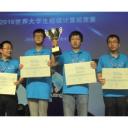 |
by staff on (#1CE66)
Over at the Nvidia Blog, George Millington writes that, the fourth consecutive year, the Nvidia Tesla Accelerated Computing Platform helped set new milestones in the Asia Student Supercomputer Challenge, the world’s largest supercomputer competition.The post GPU-Powered Systems Take Top Spot & Set Performance Records at ASC16 appeared first on insideHPC.
|
 |
by Rich Brueckner on (#1CE52)
"Single Root I/O Virtualization (SR-IOV) technology has been steadily gaining momentum for high-performance interconnects such as InfiniBand. SR-IOV can deliver near native performance but lacks locality-aware communication support. This talk presents an efficient approach to build HPC clouds based on MVAPICH2 over OpenStack with SR-IOV. We discuss the high-performance design of virtual machine-aware MVAPICH2 library over OpenStack-based HPC Clouds with SR-IOV. A comprehensive performance evaluation with micro-benchmarks and HPC applications has been conducted on an experimental OpenStack-based HPC cloud and Amazon EC2. The evaluation results show that our design can deliver near bare-metal performance."The post Building Efficient HPC Clouds with MVAPICH2 and OpenStack over SR-IOV Enabled InfiniBand Clusters appeared first on insideHPC.
|
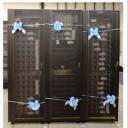 |
by Rich Brueckner on (#1CBKB)
In this video from the OpenPOWER Summit, Dr. Mike Ashworth from the STFC Hartree Centre presents: Driving Innovation at the Hartree Centre with the OpenPOWER Architecture. "The STFC Hartree Centre has been established with a focus on economic impact through our collaborations with UK industry, offering access to HPC and data intensive systems, code development expertise and collaborative research opportunities. Through a major partnership with IBM we have been porting and evaluating our key application codes on the OpenPOWER architecture seeking to leverage performance and productivity gains for the benefit of our key customers. We will describe progress in porting and optimization of applications from a range of science areas."The post Driving Innovation at the Hartree Centre with the OpenPOWER Architecture appeared first on insideHPC.
|
 |
by Rich Brueckner on (#1CBHE)
Pfizer in Connecticut is seeking an HPC Linux Engineer in our Job of the Week. "We are seeking an accomplished Linux operations engineer with a comprehensive understanding of Linux including systems administration, application tuning and optimization with a strong working knowledge of multiple scientific domains in support of HPC users. The candidate should have demonstrated troubleshooting abilities and would lead our efforts in enabling and maintaining leading edge scientific applications."The post Job of the Week: HPC Linux Engineer at Pfizer appeared first on insideHPC.
|
 |
by Rich Brueckner on (#1C8M1)
In this video from LUG 2016, Andreas Dilger from Intel presents: Lustre 2.9 and Beyond. “I do this presentation every year and I think it is important to focus on features that are going to be available in the short term."The post Video: Lustre 2.9 and Beyond appeared first on insideHPC.
|
 |
by staff on (#1C7ZE)
Designing materials atom-by-atom has long been a science fiction dream. Georg Schusteritsch and Chris Pickard of the University of Cambridge are bringing science fiction one step closer to reality using the UK National Supercomputing Facility, ARCHER to reveal the interfaces forming within and between materials. "We have developed a general first-principles approach to predict the crystal structure of interfaces in materials, a technique that represents a major step towards computationally developing materials with specially designed interfaces."The post Designing Interfaces in Materials with Supercomputers appeared first on insideHPC.
|
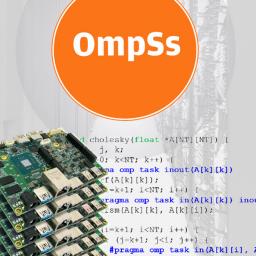 |
by Rich Brueckner on (#1C7XD)
Parallel programming software developed at the Barcelona Supercomputing Center is being used as part of a successful kickstarter campaign for a maker board with 10 times the power of the Rasberry PI 3. "Developed at BSC, the OmpSs parallel programming model is used on the new UDOO X86 board, which reached its Kickstarter funding target of €100,000 in under seven hours. UDOO X86 combines a powerful maker board and an Arduino 101-compatible platform, all embedded on the same board. It can be used for a range of applications, such as gaming, video streaming, graphic design editing, Internet of Things applications, or as a toolbox for makers."The post Quad-Core Maker Board Uses BSC Programming Model OmpSs appeared first on insideHPC.
|
 |
by Rich Brueckner on (#1C7VW)
Over at the Women in HPC Blog, Daniel Holmes from EPCC writes that the EuroMPI Conference is partnering with Women in HPC to increase diversity in high performance computing.The post EuroMPI Conference Partners with Women in HPC to Bolster Diversity appeared first on insideHPC.
|
 |
by Rich Brueckner on (#1C7PJ)
"Fortissimo will make advanced simulation more easily accessible, particularly to SMEs, through the realization of a “one-stop shop†where hardware, expertise, applications, visualization and tools will be easily available and affordable on a pay-per-use basis. In doing this, it will create and demonstrate a sustainable commercial ecosystem where actors at all levels in the value chain can realize sufficient commercial benefit to enable that ecosystem to persist independently of EU funding and continue to provide affordable services to manufacturing industry, particularly SMEs."The post HPC and SMEs – The Fortissimo Initiative appeared first on insideHPC.
|
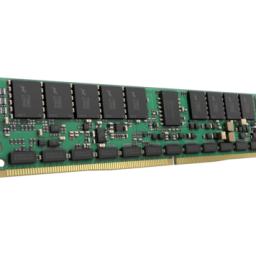 |
by Rich Brueckner on (#1C3YJ)
"HPE Persistent Memory products deliver the performance of memory with the persistence of traditional storage. The HPE 8GB NVDIMM Module is the first offering in the HPE Persistent Memory product category. Customers are looking for offerings that enable faster business decisions and the HPE Persistent Memory portfolio delivers outstanding performance to put data to work more quickly in your business. The HPE 8GB NVDIMM Module has the resiliency you have come to expect from storage technology by utilizing higher endurance DRAM and components that help verify data is moved to non-volatile technology in the event of a power loss."The post Video: HPE Persistent Memory appeared first on insideHPC.
|
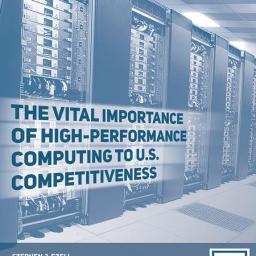 |
by Rich Brueckner on (#1C3V2)
Today the Information Technology and Innovation Foundation (ITIF) published a new report that urges U.S. policymakers to take decisive steps to ensure the United States continues to be a world leader in high-performance computing. "While America is still the world leader, other nations are gaining on us, so the U.S. cannot afford to rest on its laurels. It is important for policymakers to build on efforts the Obama administration has undertaken to ensure the U.S. does not get out paced.â€The post Report: US At Risk of Falling Behind in Supercomputing appeared first on insideHPC.
|
 |
by Rich Brueckner on (#1C3Q7)
We caught up Jeff Bonwick from DSSD to learn more about their exciting storage technology for HPC. "Our mission statement was four words: fastest storage on earth. That was our singular goal from day one, which gave the team incredible focus and clarity. Whenever we had to make a tradeoff between performance and something else, performance always won. Always. And it just so happens that when you aim for performance, density comes along for the ride because the more flash chips you have working in parallel, the faster it goes."The post Interview: Jeff Bonwick on the Secret Sauce behind DSSD appeared first on insideHPC.
|
 |
by Rich Brueckner on (#1C3NR)
In this slidecast, Gabor Samu from IBM describes the newly available IBM Platform LSF Suites for Workgroup and HPC. Designed to make it much easier to "kick the tires" on LSF, the new suites can help you configure install, maintain, and job manage HPC clusters with a single download. “The new IBM Platform LSF Suites are packages that include more than IBM Platform LSF, they provide additional functionalities designed to simplify HPC for users, administrators and the IT organization.â€The post Slidecast: Getting Started with HPC using the New IBM Platform LSF Suites appeared first on insideHPC.
|
 |
by MichaelS on (#1C3FQ)
"Parallel software and parallel hardware, used together will give the best results for an application. If the application is serial in nature, and the processor is serial, then there will obviously not be a great gain in performance. When the application is parallelized, but the processor is serial, again, no great gain. A third combination is when the application is serial and the processing is parallel. Since the application cannot take advantage of the increased power of the hardware, there will not be a great performance boost. The best and really only solution is to modify the application to run in parallel, using high performing parallel hardware."The post Code Modernization for High Performance Hardware appeared first on insideHPC.
|
 |
by Rich Brueckner on (#1C041)
"Cycle Computing software leverages cloud resources to make computation in the cloud productive at any scale, by orchestrating workflows, managing data, balancing cloud options, and enabling users in a secure, controlled way. Our software works with public cloud providers like Amazon Web Services, Google Cloud Platform, and Microsoft Azure, as well as with internal and private cloud environments."The post Video: Managing Large Production Cloud Deployments appeared first on insideHPC.
|
 |
by staff on (#1BZP3)
In this TACC podcast, Joe Stubbs from the Texas Advanced Computing Centter describes potential benefits to scientists of open container platform Docker in supporting reproducibility, NSF-funded Agave API. "As more scientists share not only their results but their data and code, Docker is helping them reproduce the computational analysis behind the results. What's more, Docker is one of the main tools used in the Agave API platform, a platform-as-a-service solution for hybrid cloud computing developed at TACC and funded in part by the National Science Foundation."The post Podcast: Using Docker for Science at TACC appeared first on insideHPC.
|
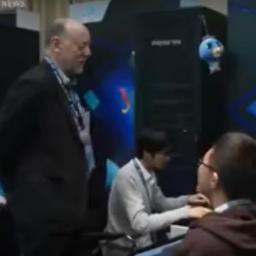 |
by Rich Brueckner on (#1BZCC)
In this video from CCTV News, ASC16 wraps up their Student Supercomputing Challenge. Huazhong University of Science won the overall competition, which concluded April 22 in Wuhan at the Central China University of Science. "With over 175 participating teams, the ASC16 is the world’s largest student cluster competition. In a race against time, student teams build HPC clusters and tune application codes to run with under 3000 watts of power."The post Video: ASC16 Student Supercomputing Challenge Wraps Up in China appeared first on insideHPC.
|
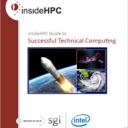 |
by Douglas Eadline on (#1BZ7R)
Many HPC applications began as single processor (single core) programs. If these applications take too long on a single core or need more memory than is available, they need to be modified so they can run on scalable systems. Fortunately, many of the important (and most used) HPC applications are already available for scalable systems. Not all applications require large numbers of cores for effective performance, while others are highly scalable. Here is how to better understand your HPC application needs.The post Understanding Your HPC Application Needs appeared first on insideHPC.
|
 |
by Rich Brueckner on (#1BWXB)
"After a careful consideration of all our options, we have made the decision to leave our current location in downtown St. Paul and relocate our employees to The Offices @ MOA complex," said Fred Kohout, chief marketing officer at Cray. "Saint Paul has been a great regional home for Cray over the last seven years. While it's always tough to leave a location you love, we are excited to move to a new site that will better facilitate our growth, and allow us to continue to build upon our strong presence in the region."The post Cray Moves Minnesota Offices from St. Paul to Mall of America appeared first on insideHPC.
|
 |
by staff on (#1BVTJ)
Today Panasas announced that it has joined the iRODS Consortium as a contributing member. The iRODS Consortium leads development and support of the Integrated Rule-Oriented Data System (iRODS), free open source software for data discovery, workflow automation, secure collaboration, and data virtualization.The post Panasas Joins IRODS Consortium to Bolster Life Sciences appeared first on insideHPC.
|
 |
by Rich Brueckner on (#1BVRP)
Today TYAN announced support for the new Intel Xeon processor E5-2600 v4 product family (Broadwell). Incorporating Intel’s new processor technologies allows TYAN to offer the latest performance and power savings features available. TYAN’s Xeon E5 platform-based server systems and motherboards continue to offer the high performance, power efficiency, and required reliability on the market.The post TYAN Servers and Motherboards Add Support for Broadwell Processors appeared first on insideHPC.
|
 |
by staff on (#1BVPJ)
Today Cambridge University spin-out Optalysys announced that the company has been awarded a $350k grant for a 13-month project from the US Defense Advanced Research Projects Agency (DARPA). The project will see the company advance their research in developing and applying their optical co-processing technology to solving complex mathematical equations. These equations are relevant to large-scale scientific and engineering simulations such as weather prediction and aerodynamics.The post Optalysys Wins DARPA Grant for Optical Computing appeared first on insideHPC.
|
 |
by staff on (#1BVPM)
Today Flow Science announced that it has formed a new subsidiary, Flow Science Latin America SAS (FSLA), to sell and support Flow Science’s suite of computational fluid dynamics software products throughout Central and South America.The post Flow Science Expands to Latin America appeared first on insideHPC.
|
 |
by Rich Brueckner on (#1BVF0)
“The National Supercomputing Center supports research projects at the University of Nevada, Las Vegas by providing a full-service supercomputing facility, plus available training and services, to academic and research institutions, government and private industry. NSCEE’s focus is on R&D related to energy, the environment, medical informatics and health care delivery. In this presentation, Lombardo will highlight results from an Alzheimer’s research project and the NSCEE’s new system at the Supernap and how it is being used to advance research for HPC users in both academia/R&D and commercial industry. Lombardo will also highlight two emerging projects; the New School of Medicine and new Technology park.â€The post Leveraging HPC for Alzheimer’s Research and Beyond appeared first on insideHPC.
|
 |
by Rich Brueckner on (#1BVB6)
"We wanted to get away from the complexity of POSIX for data, yet retain the parts of POSIX that people are used to (metadata manipulation). By divorcing ourselves from the complications of ensuring a completely POSIX data flow, we can massively simplify the data movement and storage mechanisms. MarFS lets us retain the parts of POSIX that users appreciate for data management (chown, chmod, rename, mv, etc) without inheriting the complexity of managing POSIX semantics for data manipulation. By treating the data as essentially immutable, we can leverage the very simple PUT/GET/DELETE semantics of “cloudy†data storage systems to scale out storage with ease."The post Interview: Moving Beyond POSIX with the new MarFS Object Storage Project appeared first on insideHPC.
|
 |
by Rich Brueckner on (#1BRBN)
In this video from the 2016 OpenFabrics Workshop, James Wright from Intel presents: Intel Omni-Path Fabric Management and Tools Features. "The Intel Omni-Path Fabric includes a number of hardware and software features to make fabric monitoring, management and diagnosis easier. This session will provide a brief overview of the management software architecture and key features."The post Video: Intel Omni-Path Fabric Management and Tool Features appeared first on insideHPC.
|
 |
by staff on (#1BRAM)
Berkeley Lab recently hosted the fourth annual X-Stack PI event, where X-Stack researchers, facilities teams, application scientists, and developers from national labs, universities, and industry met to share the latest developments in X-Stack application codes. "X-Stack was launched in 2012 by the U.S. Department of Energy’s Advanced Scientific Computing Research program to support the development of exascale software tools, including programming languages and libraries, compilers and runtime systems, that will help programmers handle massive parallelism, data movement, heterogeneity and failures as the scientific community transitions to the next generation of extreme-scale supercomputers."The post X-Stack PI Meeting Showcases Exascale Code appeared first on insideHPC.
|
 |
by Rich Brueckner on (#1BQPW)
In news from China this week, the Huazhong University of Science has won the ASC16 Student Cluster Challenge. The final round of the competition concluded Friday in Wuhan at the Central China University of Science.The post Huazhong University of Science Wins ASC16 Student Cluster Challenge appeared first on insideHPC.
|
 |
by Rich Brueckner on (#1BQER)
Zach Smocha from Rescale presented this talk at the HPC User Forum. "Manor Racing is partnering with San Francisco based Rescale as a key technology provider for its 2016 FIA Formula 1 World Championship challenge. Manor Racing will use Rescale’s cloud high performance computing (HPC) platform to enable trackside simulation on a whole new scale for the team. Working in tandem with Manor Racing’s existing race strategy simulation software, the Rescale cloud HPC platform will enable its engineers to evaluate thousands of simulations and strategies, placing the team to be at the cutting edge of innovative decision making during a Grand Prix weekend. The whole process is executed from a laptop web browser by Rescale’s massively scalable cloud infrastructure and computer environment."The post Performing Simulation-Based, Real-time Decision Making with Cloud HPC appeared first on insideHPC.
|
 |
by staff on (#1BQ90)
Today Mellanox announced that University of Cambridge has selected Mellanox End-to-End Ethernet interconnect solution including Spectrum SN2700 Ethernet switches, ConnectX-4 Lx NICs and LinkX cables for its OpenStack-based scientific research cloud. This new win has expanded Mellanox’s existing footprint of InfiniBand solution and empowers the UoC to realize its vision of HPC and Cloud convergence through high-speed cloud networks at 25/50/100Gb/s throughput.The post Mellanox Powers OpenStack Cloud at University of Cambridge appeared first on insideHPC.
|
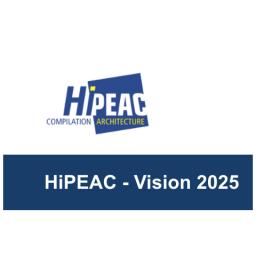 |
by Rich Brueckner on (#1BM9B)
The good folks at the European Network on High Performance and Embedded Architecture and Compilation (HiPEAC) have launched a call for contributions to the 2017 edition of the HiPEAC Vision, which will set out the way forward for computing systems over the next ten years. "Published every two years, HiPEAC’s definitive roadmap provides guidance for policy makers and technologists on key issues in the area of computing systems, such as security, reliability and energy efficiency."The post HiPEAC Seeks Your Input for the Next Ten Years of Computing appeared first on insideHPC.
|
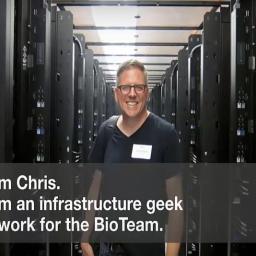 |
by Rich Brueckner on (#1BM80)
In this video, Chris Dagdigian from Bioteam delivers his annual assessment of the best, the worthwhile, and the most overhyped information technologies for life sciences at the 2016 Bio-IT World Conference & Expo in Boston. "The presentation tries to recap the prior year by discussing what has changed (or not) around infrastructure, storage, computing, and networks. This presentation will help scientists, leadership and IT professionals understand the basic topics involved in supporting data intensive science."The post Video: HPC Trends from the Trenches at Bio-IT World appeared first on insideHPC.
|
 |
by Rich Brueckner on (#1BHN3)
In this video from the HPC User Forum in Tucson, Gary Paek from Intel presents: Intel's Machine Learning Strategy. "Earlier this week, Intel announced the inception of the Intel Data Analytics Acceleration Library (Intel DAAL) open source project. Intel DAAL helps to speed up big data analysis by providing highly optimized algorithmic building blocks for all stages of data analytics (preprocessing, transformation, analysis, modeling, validation, and decision making) in batch, online, and distributed processing modes of computation."The post Video: Intel’s Machine Learning Strategy appeared first on insideHPC.
|
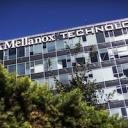 |
by Rich Brueckner on (#1BHKN)
Mellanox is seeking an HPC Application Performance Engineer in our Job of the Week. "Mellanox Technologies is looking for a talented engineer to lead datacenter application performance optimization and benchmarking over Mellanox networking products. This individual will primarily work with marketing and engineering to execute low-level and application level benchmarks focused on High Performance Computing (HPC) open source and ISV applications in addition to providing software and hardware optimization recommendations. In addition, this individual will work closely with hardware and software partners, and customers to benchmark Mellanox products under different system configurations and workloads."The post Job of the Week: HPC Application Performance Engineer at Mellanox appeared first on insideHPC.
|
 |
by staff on (#1BF5B)
Today the University of Iceland unveiled a new supercomputer that will boost research in a range of scientific areas. Manufactured by Lenovo, the cluster was funded by the Research Infrastructure Fund Iceland with matching funds from the University of Iceland, Reykjavik University.The post University of Iceland Unveils Lenovo Supercomputer appeared first on insideHPC.
|
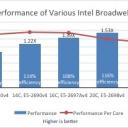 |
by staff on (#1BEMC)
Over at the Dell HPC Community Blog, Ashish Kumar Singh, Mayura Deshmukh and Neha Kashyap discuss the performance characterization of Intel Broadwell processors with High Performance LINPACK (HPL) and STREAM benchmarks. "The performance of all Broadwell processor used for this study is higher for both HPL and STREAM benchmarks. "There is ~12% increase in measured memory bandwidth for Broadwell processors compared to Haswell processors. Broadwell processors measure better power efficiencies than the Haswell processors. In conclusion, Broadwell processors may fulfill the demands of more compute power for HPC applications."The post HPC Benchmarking Results for Intel Broadwell Processors appeared first on insideHPC.
|
 |
by Rich Brueckner on (#1BE8F)
Leo Reiter from Nimbix presented this deck at the HPC User Forum. “Nimbix is a pure high performance computing cloud built for volume, speed and simplicity. We give people the tools and the processing power to solve their biggest, toughest problems. We give you the freedom to imagine new possibilities, to test the limits of reality, and to model the future. For most workloads, Nimbix is far less expensive than building, running and maintaining your own supercomputer. It’s also more efficient at spinning up, executing, completing the job and delivering your results — which saves you time and money. And our user-friendly platform means you invest less in development and infrastructure.â€The post Video: Cloud for the “Missing Middle†appeared first on insideHPC.
|
 |
by staff on (#1BE57)
The Board of Directors of the OpenMP Architecture Review Board (ARB) is pleased to announce the appointment of Dr. Michael Klemm as the new CEO of the OpenMP organization, a group of vendors and research organizations creating the standard for one of the most popular shared-memory and embedded parallel programming models in use today. Dr. Klemm succeeds Mr. Michael Wong, who served as the OpenMP CEO for almost 5 years.The post Michael Klemm Appointed CEO of OpenMP ARB appeared first on insideHPC.
|
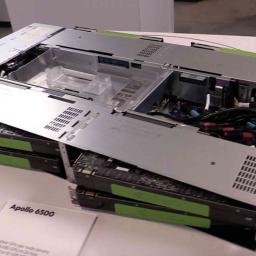 |
by Rich Brueckner on (#1BE1A)
In this video from the 2016 GPU Technology Conference, Greg Schmidt from Hewlett Packard Enterprise describes the new Apollo 6500 server. "With up to eight high performance NVIDIA GPU cards designed for maximum transfer bandwidth, the HPE Apollo 6500 System is purpose-built for deep learning applications. Its high ratio of GPUs to CPUs, dense 4U form factor and efficient design enable organizations to run deep learning recommendation algorithms faster and more efficiently, significantly reducing model training time and accelerating the delivery of real-time results, all while controlling costs."The post Hewlett Packard Enterprise Packs 8 GPUs into Apollo 6500 Server appeared first on insideHPC.
|
 |
by Rich Brueckner on (#1BB5N)
The Ohio Supercomputer Center has named its newest HPC cluster after Olympic champion Jesse Owens. The new Owens Cluster will be powered by Dell PowerEdge servers featuring the new Intel Xeon processor E5-2600 v4 product family, include storage components manufactured by DDN, and utilize interconnects provided by Mellanox. "Our newest supercomputer system is the most powerful that the Center has ever run,†ODHE Chancellor John Carey said in a recent letter to Owens’ daughters. “As such, I thought it fitting to name it for your father, who symbolizes speed, integrity and, most significantly for me, compassion as embodied by his tireless work to help youths overcome obstacles to their future success. As a first-generation college graduate, I can relate personally to the value of mentors in the lives of those students.â€The post Ohio Supercomputer Center Names New Cluster after Jesse Owens appeared first on insideHPC.
|
 |
by Rich Brueckner on (#1BAG9)
This week, the European Commission presented a vision for the European Science Cloud that will bring together current and future data infrastructures. The European Open Science Cloud will be created for European researchers and their global scientific collaborators by integrating and consolidating e-infrastructure platforms, federating existing scientific clouds and research infrastructures, and supporting the development of cloud-based services.The post e-IRG Roadmap to Help Shape European Open Science Cloud appeared first on insideHPC.
|
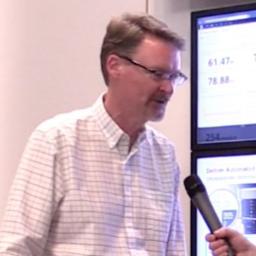 |
by Rich Brueckner on (#1BA30)
In this video from the 2016 GPU Technology Conference, Rich Friedrich from Hewlett Packard Enterprise describes how the company makes it easier for Data Scientists to program GPUs. "In April, HPE announced a public, open-source version of the platform called the Cognitive Computing Toolkit. Instead of relying on the traditional CPUs that power most computers, the Toolkit runs on graphics processing units (GPUs), inexpensive chips designed for video game applications."The post How HPE Makes GPUs Easier to Program for Data Scientists appeared first on insideHPC.
|
 |
by staff on (#1B9YZ)
Today Cray announced that its Board of Directors has appointed Brian V. Turner as a member of the Board and as a member of its Audit and Compensation Committees, effective April 18, 2016.The post Brian V. Turner Joins Cray’s Board appeared first on insideHPC.
|
 |
by Rich Brueckner on (#1B9X4)
In this special guest feature from Scientific Computing World, ISC's Nages Sieslack highlights a convergence of technologies around HPC, a focus of the ISC High Performance conference, which takes place June 19-23 in Frankfurt. "In addition to the theme of convergent HPC technologies, this year’s conference will also offer two days of sessions in the industry track, specially designed to meet the interests of commercial users. Our focus is Industrie 4.0, a German strategic initiative conceived to take a leading role in pioneering industrial IT, which is currently revolutionizing engineering in the manufacturing sector."The post Why the HPC Industry will Converge on Europe at ISC 2016 appeared first on insideHPC.
|
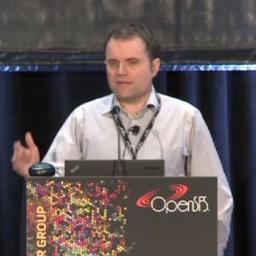 |
by Rich Brueckner on (#1B9VJ)
Peter Jones from Intel presented this talk at LUG 2016 in Portland. "The OpenSFS Lustre Working Group (LWG) is the place the where the participants of OpenSFS come together to coordinate their software development efforts for the Lustre high-performance, Open Source, parallel filesystem. This includes planning and the roadmap for community releases of Lustre."The post Video: Lustre Community Release Update appeared first on insideHPC.
|
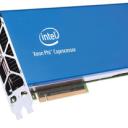 |
by MichaelS on (#1B9VM)
"As clock speeds for CPU’s have not been increasing as compared to a decade ago, chip designers have been enhancing the performance of both CPUs, such as the Intel Xeon and the Intel Xeon Phi coprocessor by adding more cores. New designs allow for applications to perform more work in parallel, reducing the overall time to perform a simulation, for example. However, to get this increase in performance, applications must be designed or re-worked to take advantage of these new designs which can include hundreds to thousands of cores in a single computer system."The post Why Parallelism? appeared first on insideHPC.
|
 |
by Rich Brueckner on (#1B6AW)
In this video from the 2016 OpenFabrics Workshop, Zili Zheng from LBNL presents: UPC++. "UPC++ is a parallel programming extension for developing C++ applications with the partitioned global address space (PGAS) model. UPC++ has demonstrated excellent performance and scalability with applications and benchmarks such as global seismic tomography, Hartree-Fock, BoxLib AMR framework and more. In this talk, we will give an overview of UPC++ and discuss the opportunities and challenges of leveraging modern network features."The post Video: UPC++ Parallel Programming Extension appeared first on insideHPC.
|
 |
by staff on (#1B696)
In this RCE Podcast, Marcel Kornacker from Cloudera describes the Impala project. Impala brings scalable parallel database technology to Hadoop, enabling users to issue low-latency SQL queries to data stored in HDFS and Apache HBase without requiring data movement or transformation. Impala is integrated with Hadoop to use the same file and data formats, metadata, security and resource management frameworks used by MapReduce, Apache Hive, Apache Pig and other Hadoop software.The post RCE Podcast Looks at the Impala Project appeared first on insideHPC.
|
 |
by Rich Brueckner on (#1B67B)
The New York Scientific Data Summit (NYSDS) has issued its Call for Papers. The event takes place August 14-17 in New York City.The post Call for Papers: New York Scientific Data Summit appeared first on insideHPC.
|